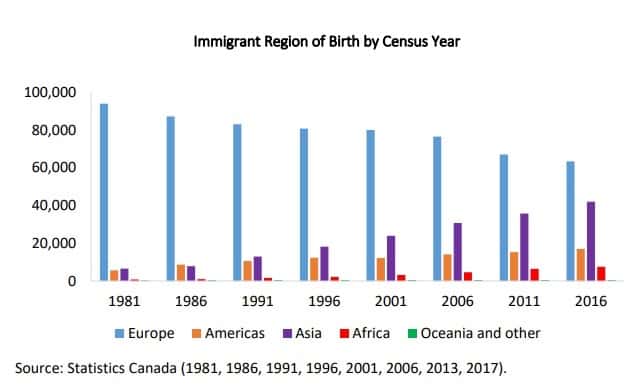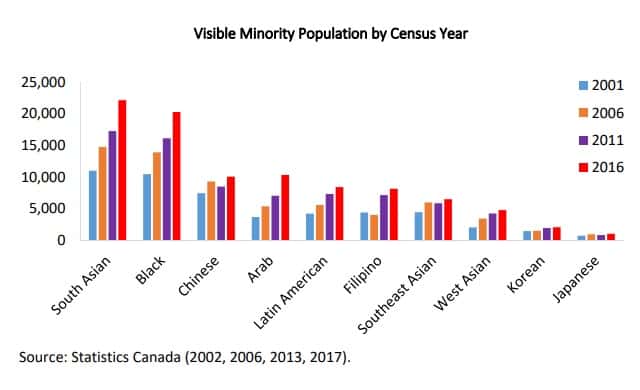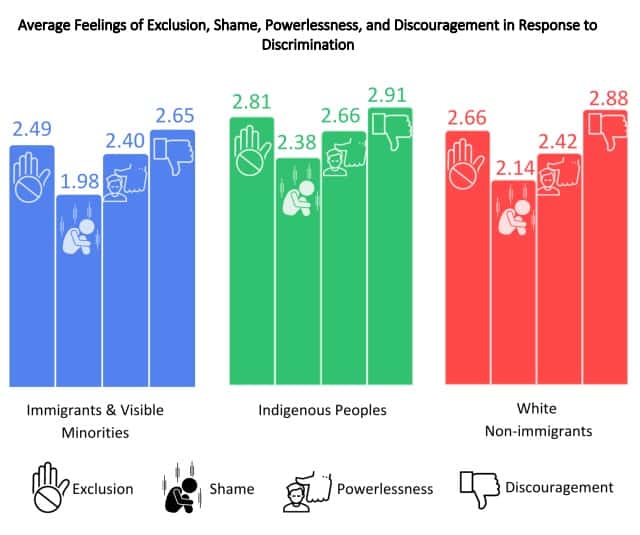Hamilton offered tips on reducing racial, ethnic discrimination in the city
Published December 7, 2021 at 9:21 pm

A new report offers recommendations on how Hamilton, which has struggled with hate crimes, can become a more welcoming community for immigrants, racialized individuals and Indigenous peoples.
On Tuesday (Dec. 7), the federally funded Hamilton Immigration Partnership Council released an 86-page report entitled, “Discrimination Experienced by Immigrants, Visible Minorities, and Indigenous Peoples in Hamilton.” It was conducted earlier this year with a “relatively representative” sample from three groups, including white non-immigrants. The report collected data on experiences with discrimination, while sorting it by the form of discrimination and how each group was likely to cope with it.
The report’s release comes one day ahead of a City of Hamilton general issues committee (GIC) meeting on Wednesday. The GIC’s agenda includes discussion of Hamilton’s Hate Prevention, Mitigation and Community Initiatives Action Plan.
Focus on discrimination in Hamilton has also come to the forefront after the Hamilton Police Service’s recent arrests of six housing activists, five of whom are Black, who were protesting the city’s encampment teardown policy. Respected leaders from Black-led advocacy groups are calling for charges to be dropped and a judicial inquiry into police conduct to be held.
The report from the HIPC said that 83 per cent of Indigenous peoples had experienced discrimination in some form within the past three years, and were more likely to have experienced it at work or while applying for job. However, it notes that Hamilton police “found that no hate incidents and crimes against Indigenous Peoples had been reported in 2020.”
Fifty-nine per cent of respondents who are racialized immigrants experienced discrimination. Among white non-immigrants, who were included as a comparison group, 48.5 per cent said they had experienced discrimination.
Experiences of discrimination among Indigenous Peoples and Racialized Immigrants in #HamOnt – results of our survey are released today! We will be sharing more details here — and taking action too. https://t.co/s6rgefzg2x pic.twitter.com/F9TFDkHGLl
— HIPC (@HipcHamilton) December 7, 2021
In the first two groups, 2 to 4 per cent more women experienced discrimination. In all three, people with full-time employment reported discrimination at a higher rate than people who did not have it. The differences there were 6.8 per cent in the immigrant and visible minority group, 3.8 per cent among Indigenous peoples, and 14.7 per cent among white non-immigrants.
The responses also found that the perpetrators of discrimination were more likely to be male than female, and were most likely to be middle-aged.
Hamilton’s cultural composition has changed markedly in recent years. Census data from Statistics Canada (StatCan) shows immigration to the city from Asia and Africa has increased in recent years, while immigration from Europe has declined. The growing South Asian and Black communities each comprise over 20,000 residents.


Coping mechanisms
The HIPC report also examined variances in coping among Hamiltonians who experienced discrimination, and the feelings
Immigrants and visible minorities were more likely to use passive coping stategies. But Indigenous people reported feelings of discouragement, exclusion, powerless and shame at higher rates than the other two groups.

Main recommendations
Ultimately, three main recommendations directed toward making Hamilton more welcoming are offered:
- “Promote an environment that encourages victims of discrimination to report their experiences.”The juxtaposition between Indigenous peoples’ experiences and a lack of reported hate crimes was one example of a lack of clarity about “to whom one should report discrimination incidents.” Examples of remedies that could encourage people to come forward for help include the the Coalition of Muslim Women Kitchener-Waterloo’s online reporting tool for people who experience or witness hate.
- “Help victims of discrimination to use effective coping strategies.”This section calls for more mental health supports that are “evidence-based and provided in a culturally sensitive manner.”
- “Engage in effective, evidence-based initiatives to prevent and reduce discrimination.”For each group, the report breaks down the contexts and settings people were in when they were discriminated against. As such, anti-discrimination initiatives would need to be more focused on such specifics, rather than generalities.
The HIPC study was conducted by Drs. Alina Sutter and Victoria M. Esses from the Network for Economic and Social Trends at Western University.
Their sample included 315 immigrants and visible minorities, 176 Indigenous peoples, and 293 white non-immigrants.
“This ensured a relatively representative sample of participants within each of the three groups,” the report states. “The survey took approximately 10 minutes to complete, and was available in both English and French. Ethics approval for this study was obtained from Western University’s research ethics board.”
The report can be read at hamiltonimmigration.ca. The HIPC is funded through Immigration, Refugees and Citizenship Canada.
insauga's Editorial Standards and Policies advertising





